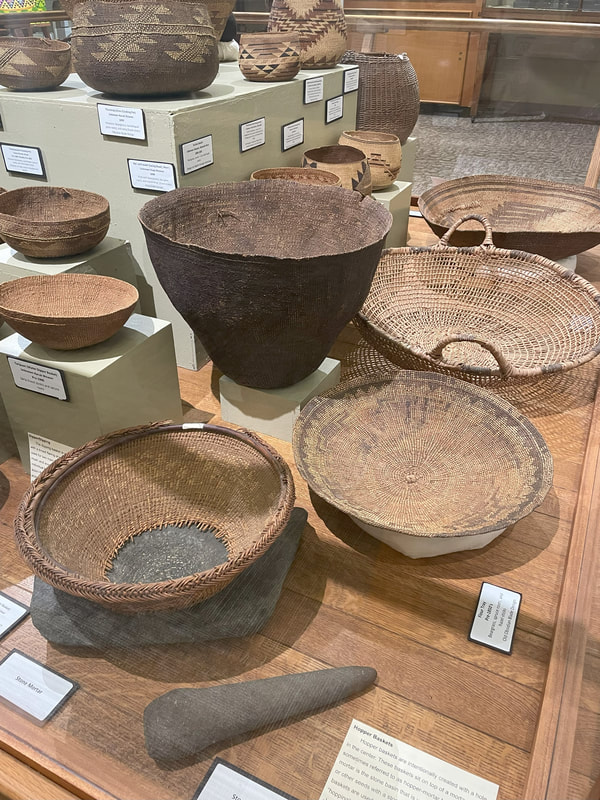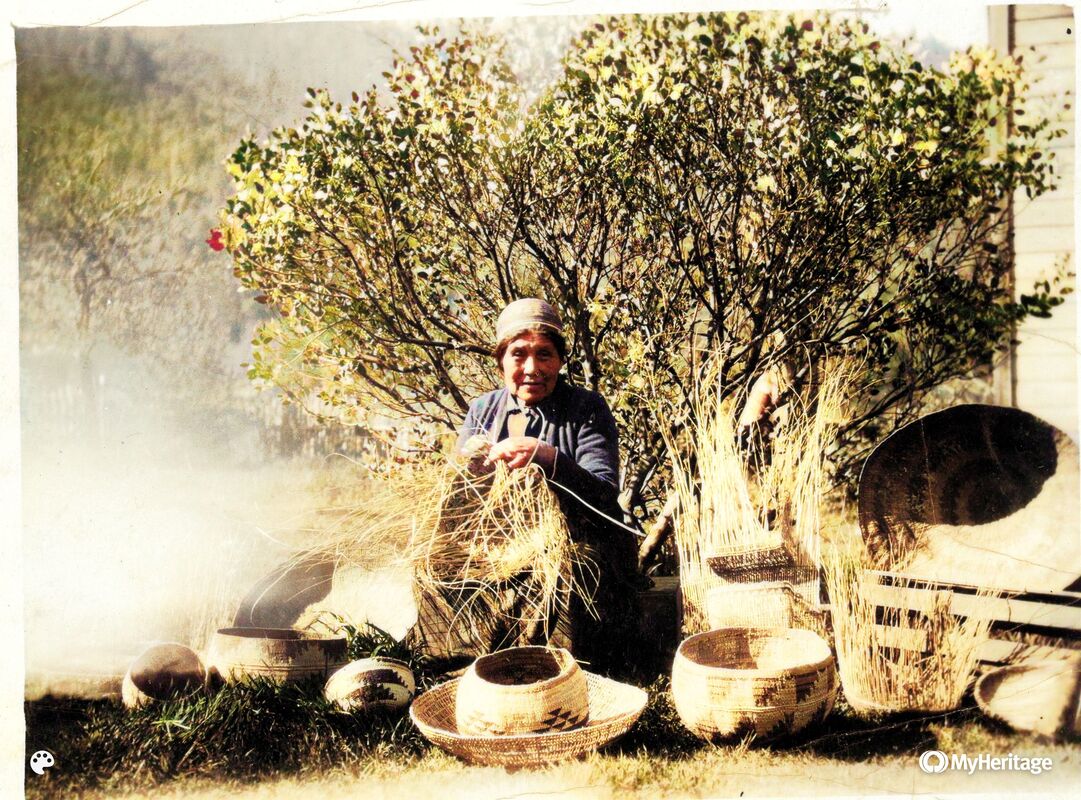Traditional Legacy: Baskets from the 1800's
|
California basket weaving emerged from a tradition at least 6,000- 8,000 years old. Very few ancient baskets have survived through to the present day due to their organic composition. The baskets on display in this exhibit represent a fraction of the baskets that were in use prior to colonization of the area in the 1850’s. The baskets in this exhibit are between approximately 123 - 203 years old, and are the oldest in the Clarke Historical Museum’s collection.
|
The Wiyot, Yurok, Hupa and Karuk Tribes are all distinct and unique but there are similarities in many ways. Prior to colonization of the area daily life in these communities would include: basket weaving, canoe building, gathering and processing materials and resources, singing, dancing, storytelling among many other significant roles.
The abundance of natural resources created wealth within the communities but also deeply tied them to the landscape. The religion or spirituality, called World Renewal, of the local tribes is inseparable from the land and practices. World Renewal ceremonies are conducted to ensure the abundance of resources and to maintain the balance of the Earth for everyone, not just those that adhere to the spiritual beliefs. In response to the COVID-19 outbreak the Yurok Tribe held a World Renewal ceremony outside of the traditional timeframe (every other year) to bring the world back into balance during this incredibly challenging time. Basket weaving is one example of daily activities that are tied to spiritual practices, it has traditionally only been done with a clear mind ensuring that the weaver is not putting negative energy into their basket. While colonization of the area disrupted, damaged and changed many of the daily life practices, they were not lost or forgotten. They were stored away in the collective consciousness waiting for it to be safe to practice out in the open once again. Today every basket, canoe, necklace, tool, anything imaginable is still actively being practiced and taught to the next generation. -Yurok Tribe’s Website, The Redwood River Walk |




